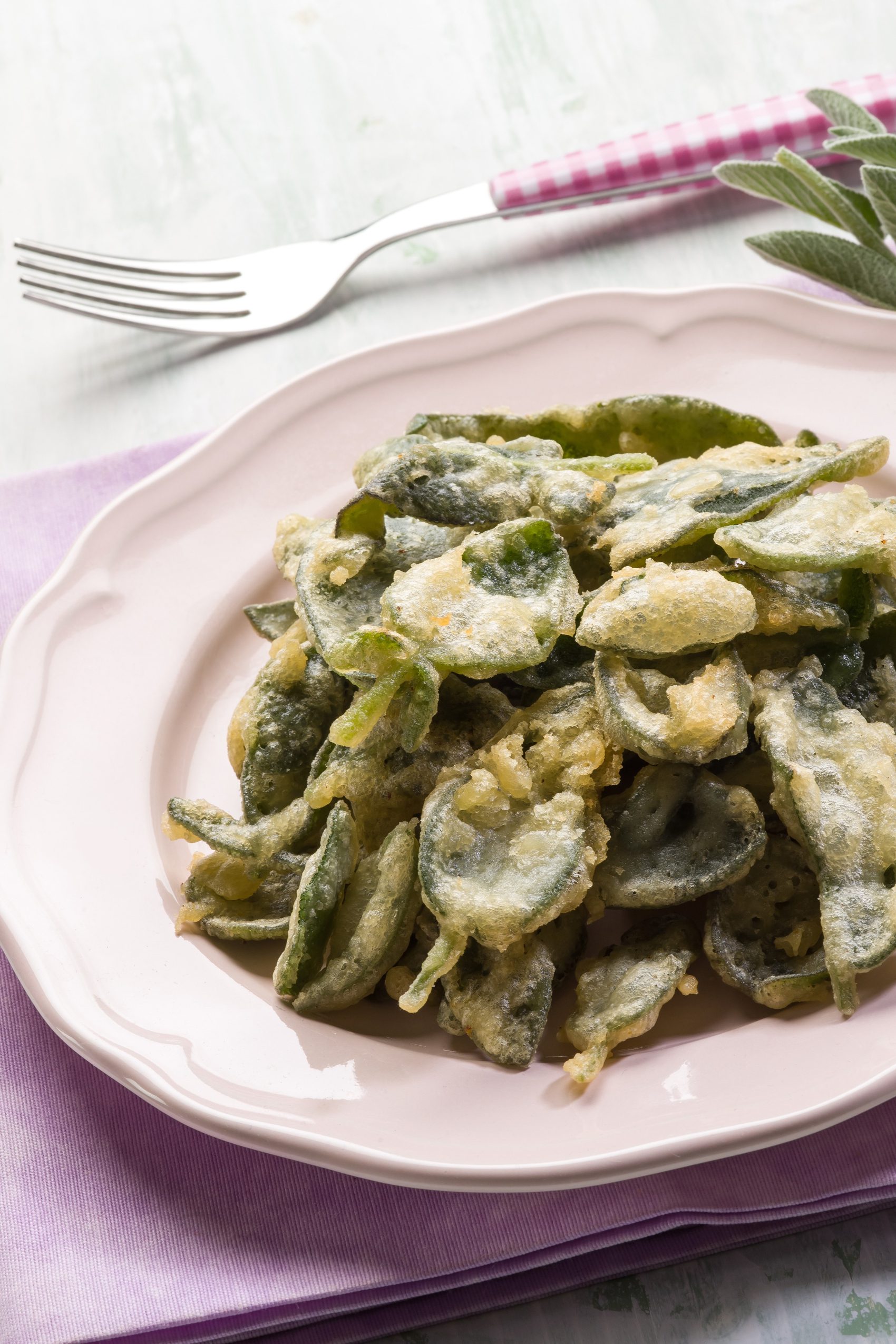Because its best-known culinary use is as a key ingredient in stuffing, sage may seem like a quintessentially American herb. Indeed, it is one of four plants considered sacred by Native Americans, who use sage both ceremonially and medicinally. (The root of the herb’s Latin name, Salvia, means “to heal.”) Burning bundles of dried sage in rituals sometimes called smudging or cleansing was thought to promote mental and physical healing and dispel negative energy.
But in fact, these fragrant, fuzzy leaves originated in the Mediterranean and their history can be traced back to the ancient Greeks, who are said to have used sage as a meat preservative, cultivating it as both food and medicine. Today, sage remains a very good accompaniment to many Mediterranean flavors and research bears out its role as a health-promoting herb.
What Are the Health Benefits of Sage?
A member of the mint family, sage keeps good company with other potent herbs including basil, oregano, rosemary and thyme. Like other leafy greens, sage is a source of several beneficial nutrients — including fiber, potassium and vitamin K — as well as other vitamins and trace minerals. It also supports the immune system and benefits throat health. And even though it is typically consumed in smaller amounts, sage still delivers a surprising amount of some of them: for instance, a teaspoon of ground sage contains 10% of the vitamin K you need in a day, which helps build strong bones.
But the real power of the herb is likely found in its high concentration of polyphenols, plant compounds with antioxidant effects. Sage has more than 160 of these compounds, including chlorogenic and ellagic acid, both of which have been studied for their ability to boost cognitive function and ward off dementia.
Salvia has also been found to have anticancer and antidiabetic properties, and one small study found that drinking sage tea twice daily for six weeks led to a reduction in LDL cholesterol (the “bad” kind that can lead to heart disease) while raising HDL or good cholesterol.
It is important to note that not all species of sage are edible, and some of those that are contain a compound that has been found to cause seizures in high doses, such as the amounts found in essential oils. For that reason, it is best to consult a healthcare provider before taking sage as a regular supplement, particularly if you are pregnant.
How To Use Sage in the Kitchen
Sage is more than okay to cook with, however. The most common variety you’ll find gracing grocery shelves is salvia officinalis, and you can find it fresh, dried and ground into powder.
A perennial with a long growing season, sage can be found fresh well into late fall in most regions. The plant flowers in late summer, and those pretty purple blooms are edible, too, and make a lovely garnish on salads. Some botanists believe that a hardy crop of sage is an indication of future prosperity. This is certainly true if you embrace sage in the kitchen.
The velvety white-green leaves are not only visually striking, they’re fragrant, too, and with such strong flavor, that a little goes a long way. Unsurprisingly, given its roots, sage pairs exceedingly well with Mediterranean dishes and is strong enough to stand up to rich sauces (there’s some preliminary evidence to show that the herb may even help aid fat digestion), which is why you’ll often see it paired with pasta or garnishing a pumpkin or butternut cream soup. Sage compound butter can be a delightful and versatile condiment to keep on hand (or add to a butter board, if that’s your thing). Sage also plays well with other earthy flavors like root vegetables and mushrooms, and makes a terrific seasoning for pork, which is why you’ll find it in many sausages.
Cooking with sage is easy: The leaves can be added, fresh or dried, whole or chopped to any number of dishes from salads to spice blends. It’s also quite popular to crisp the leaves in a little brown butter to serve over pasta, polenta, or even potatoes or eggs. In Italy, they take it one step further by battering and frying whole leaves and serving as a traditional appetizer. You can also steep the leaves into a flavorful simple syrup for cocktails (with or without alcohol) or tea. Once you start cooking with this fragrant herb, chances are you’ll find even more uses for it, and start to enjoy it more than just once a year.

Salvia Fritta (Fried Sage Leaves)
Yields 4 servings (as an appetizer)
Raw, whole sage leaves can be overpowering, but battering and frying them tones down their flavor just enough and adds a delicate crunch. Easily the best thing about this traditional Tuscan dish, though, is that you can make it with practically zero notice since it comes together in mere minutes with a few pantry staples you’re bound to have on hand. Some people prefer to replace the carbonated water with beer, but to best enjoy the pure taste of this herb, stick with this recipe. Sprinkled with some lemon salt, they make a unique appetizer, and you can also float them on soups or add to salads.
¼ cup all-purpose flour
¼ teaspoon salt
Pinch of pepper
¼ cup carbonated water
Neutral oil such as vegetable oil for frying
Around 25 fresh large sage leaves, washed and dried
Lemon salt
- In a small bowl, whisk together flour, salt, and pepper. Add carbonated water.
2. Heat oil over medium-high in a deep pan or wok, making sure there is enough to cover the leaves (1-2 inches up the side of the pan).
3. Dip each sage leaf into the batter to fully coat, letting excess drip off, then place carefully in hot oil. Repeat with four more leaves (you don’t want to crowd the pan). Fry until golden, about 1-2 minutes per side.
4. Remove using a slotted metal spoon and place on a paper-towel lined plate. Sprinkle with lemon salt. Repeat with remaining sage leaves, working in batches of five leaves at a time.



